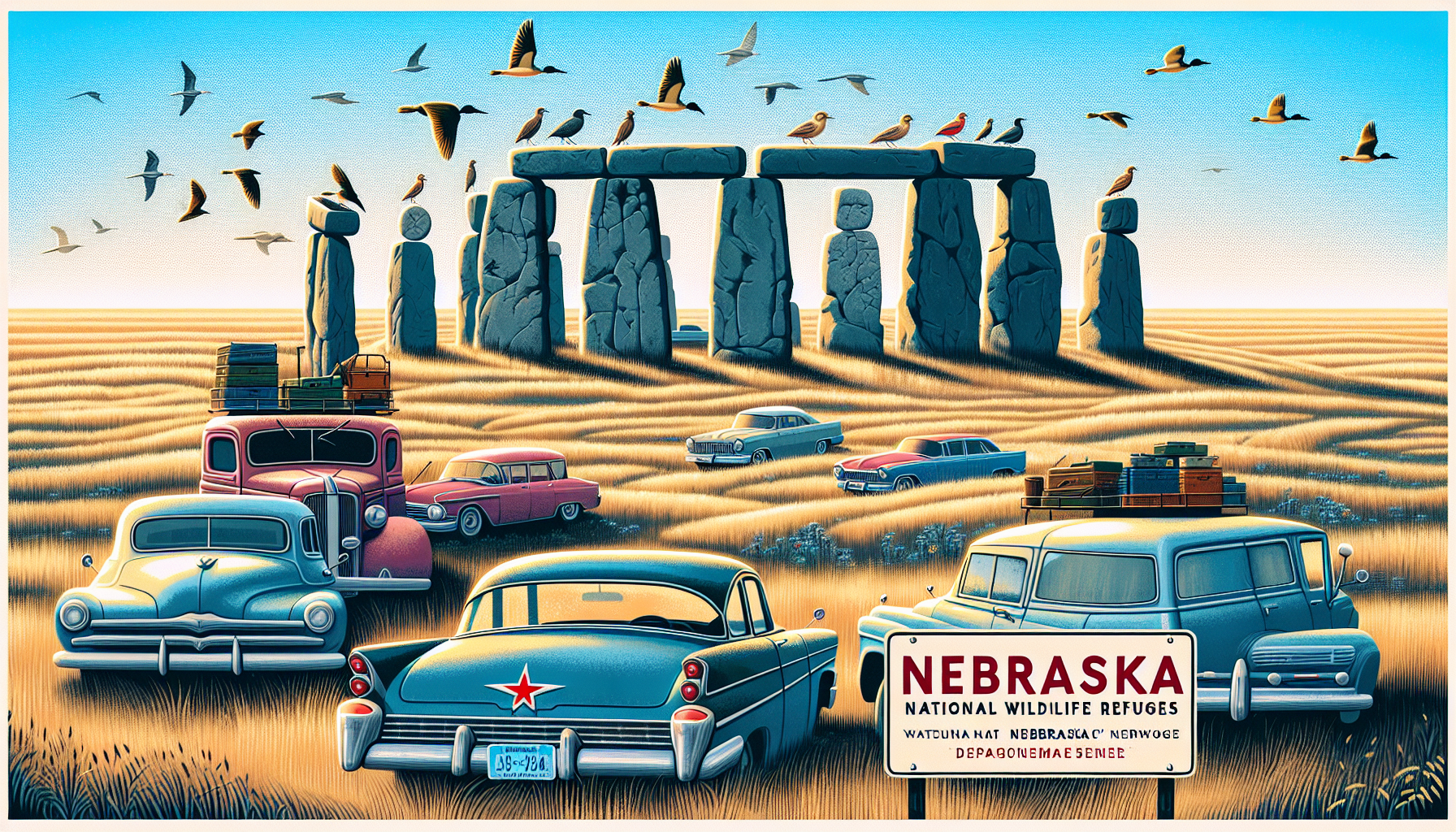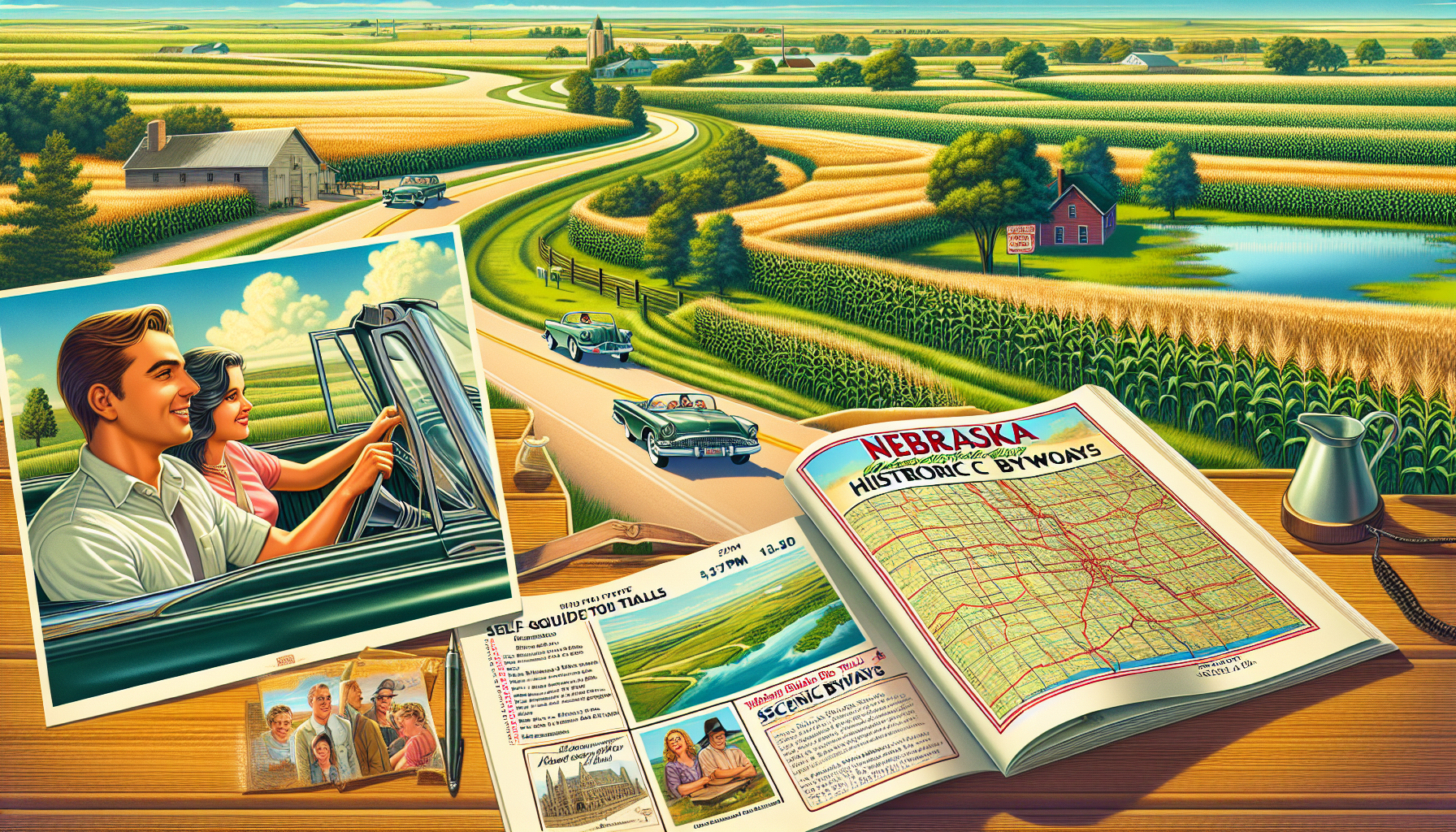Platte River Dunes Formation

Traveling through Nebraska, one of the Great Plains states in the United States, offers a unique opportunity to witness the breathtaking natural beauty of the region. Within the realm of nature and wildlife, one fascinating geological feature that stands out is the Platte River Dunes Formation. Spanning across south-central Nebraska, this vast expanse of sand dunes was formed as a result of the relentless movement of the Platte River and prevailing winds.
The Platte River Dunes Formation is an extensive network of sand dunes that has evolved over thousands of years. The dunes owe their existence to the shallow gradient of the Platte River and the consistent winds blowing from the north and northwest. These winds facilitate the transportation of sand from the river bed and banks, depositing it in a new location, typically on the south or southeast side of the river, resulting in the formation of a new dune. A notable example can be seen at the Platte River State Park in Louisville, Nebraska, where visitors can observe the dunes in close proximity to the river.
One key factor contributing to the dune formation is the role of vegetation. Native grasses such as switchgrass and big bluestem stabilize the sand dunes, preventing excessive movement of the sand. However, when vegetation cover is disrupted, either by natural or human-induced causes, the sand is exposed to wind forces, allowing the dunes to shift and grow. In the 19th century, European-American settlement and the introduction of livestock grazing significantly altered the native vegetation landscape, resulting in the destabilization of existing dunes and the creation of new ones.
A typical characteristic of the Platte River Dunes Formation is the formation of blowouts, which occur when a strong gust of wind blows across a sand dune with sparse vegetation cover, causing the sand to blow away and forming a depression. A remarkable example of this phenomenon can be observed in the Dunbar State Wildlife Management Area, located near the village of Dunbar, Nebraska. Here, a substantial blowout has formed, creating a sand-free depression amidst the otherwise vast expanse of sand dunes.
Despite the relentless shifting of the sand dunes, a surprising level of biodiversity exists within the Platte River Dunes Formation. Common species found in this unique ecosystem include the prickly pear cactus, sand cherries, and goldenrod, which are well adapted to the harsh conditions of the shifting sand. Furthermore, the region is a critical stopover point for a multitude of migratory birds, including the sandhill crane, piping plover, and the Upland sandpiper.
The unique dynamics of the Platte River Dunes Formation make it a focal point for ongoing scientific research, particularly in the fields of geomorphology and ecology. For example, researchers at the University of Nebraska-Lincoln have been studying the interactions between sand dunes and vegetation in an effort to develop effective management strategies for preserving this remarkable ecosystem.
As scientists and travelers continue to explore the Platte River Dunes Formation, a fascinating narrative of geological and ecological change unfolds. This natural wonder is an integral part of Nebraska's natural heritage, providing visitors with an exceptional opportunity to experience the forces that shape the Earth's surface.
In conclusion, the Platte River Dunes Formation is an extraordinary example of the complex interactions between geological and ecological processes in a highly dynamic environment. Its existence is a testament to the relentless forces that have shaped the surface of the Earth over thousands of years, creating a unique and intriguing landscape that captivates the imagination of all who visit.
The Platte River Dunes Formation is an extensive network of sand dunes that has evolved over thousands of years. The dunes owe their existence to the shallow gradient of the Platte River and the consistent winds blowing from the north and northwest. These winds facilitate the transportation of sand from the river bed and banks, depositing it in a new location, typically on the south or southeast side of the river, resulting in the formation of a new dune. A notable example can be seen at the Platte River State Park in Louisville, Nebraska, where visitors can observe the dunes in close proximity to the river.
One key factor contributing to the dune formation is the role of vegetation. Native grasses such as switchgrass and big bluestem stabilize the sand dunes, preventing excessive movement of the sand. However, when vegetation cover is disrupted, either by natural or human-induced causes, the sand is exposed to wind forces, allowing the dunes to shift and grow. In the 19th century, European-American settlement and the introduction of livestock grazing significantly altered the native vegetation landscape, resulting in the destabilization of existing dunes and the creation of new ones.
A typical characteristic of the Platte River Dunes Formation is the formation of blowouts, which occur when a strong gust of wind blows across a sand dune with sparse vegetation cover, causing the sand to blow away and forming a depression. A remarkable example of this phenomenon can be observed in the Dunbar State Wildlife Management Area, located near the village of Dunbar, Nebraska. Here, a substantial blowout has formed, creating a sand-free depression amidst the otherwise vast expanse of sand dunes.
Despite the relentless shifting of the sand dunes, a surprising level of biodiversity exists within the Platte River Dunes Formation. Common species found in this unique ecosystem include the prickly pear cactus, sand cherries, and goldenrod, which are well adapted to the harsh conditions of the shifting sand. Furthermore, the region is a critical stopover point for a multitude of migratory birds, including the sandhill crane, piping plover, and the Upland sandpiper.
The unique dynamics of the Platte River Dunes Formation make it a focal point for ongoing scientific research, particularly in the fields of geomorphology and ecology. For example, researchers at the University of Nebraska-Lincoln have been studying the interactions between sand dunes and vegetation in an effort to develop effective management strategies for preserving this remarkable ecosystem.
As scientists and travelers continue to explore the Platte River Dunes Formation, a fascinating narrative of geological and ecological change unfolds. This natural wonder is an integral part of Nebraska's natural heritage, providing visitors with an exceptional opportunity to experience the forces that shape the Earth's surface.
In conclusion, the Platte River Dunes Formation is an extraordinary example of the complex interactions between geological and ecological processes in a highly dynamic environment. Its existence is a testament to the relentless forces that have shaped the surface of the Earth over thousands of years, creating a unique and intriguing landscape that captivates the imagination of all who visit.
